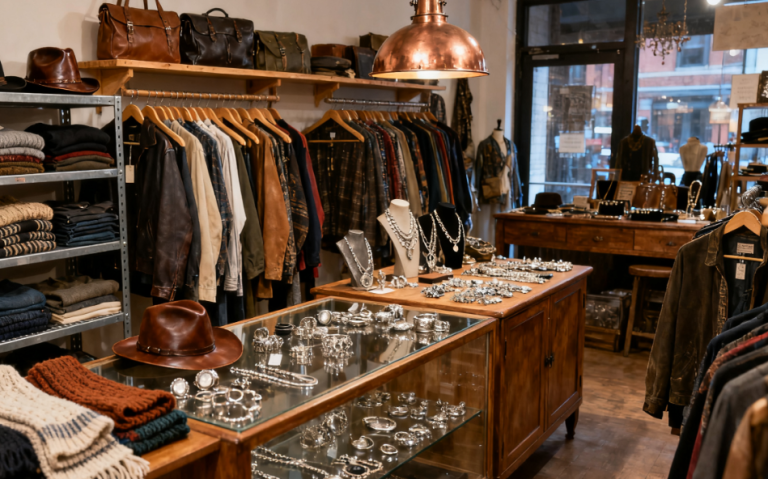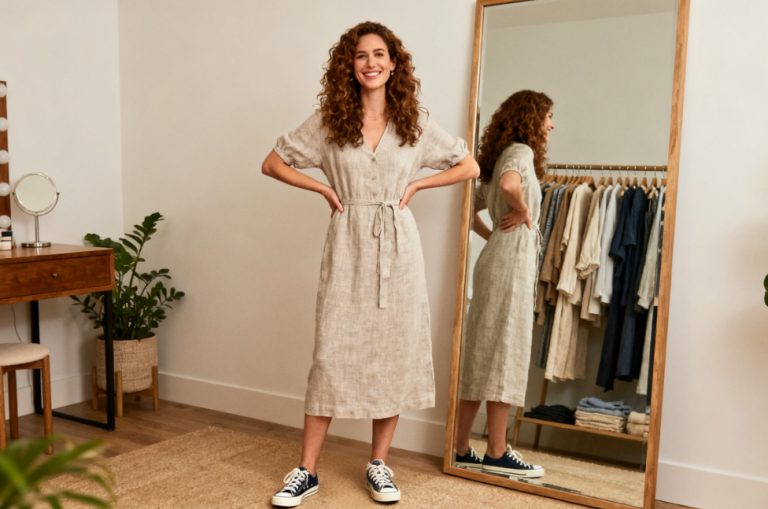
Subtitle: Sustainable packaging isn’t just a trend — it’s a competitive edge your fashion brand can’t afford to ignore.
The Unboxing Guilt No One Talks About
Let’s be honest — there’s something satisfying about receiving a beautifully wrapped fashion package. The crisp branded tissue paper, the luxe cardboard box, the silky ribbon — it’s Instagram-worthy. But once the thrill is over, what’s left?
A pile of packaging waste. Most of it destined for a landfill.
In an era when sustainability is no longer optional, fashion brands must rethink how they package their products. From customer expectations to regulatory pressures, the demand for eco-friendly alternatives is growing fast — and brands that fail to keep up risk more than just bad PR.
This article explores why sustainable packaging matters now more than ever, and offers five green alternatives that are affordable, scalable, and stylish.
The Problem with Traditional Fashion Packaging
Fashion’s dirty secret isn’t just about textile waste — it’s also about the materials that carry the clothing.
1. It’s Excessive
Luxury fashion, in particular, often uses multiple layers of packaging — plastic sleeves, laminated cardboard, tissue, foam inserts, stickers, and more. The visual impact may be impressive, but the environmental impact is devastating.
2. It’s Non-Recyclable
Many packaging components are non-recyclable due to plastic coatings, mixed materials, or dyes. That “premium” glossy box? It might never break down.
3. It’s Costly (and Wasteful)
Branded packaging isn’t just environmentally costly — it’s also expensive for brands. Worse, customers increasingly view excessive packaging as wasteful, not luxurious.
Why Sustainable Packaging is the Future of Fashion
If you think switching to sustainable packaging is just about saving trees, think again. It’s about future-proofing your brand.
1. Consumers Demand It
Over 70% of Gen Z consumers say sustainability influences their purchasing decisions. And in fashion, packaging is often their first physical touchpoint with your brand.
A recent study by McKinsey found that 55% of consumers would pay more for products in sustainable packaging.
2. It Boosts Brand Loyalty
Eco-conscious packaging tells customers you share their values. This translates to deeper emotional connection, repeat purchases, and positive word-of-mouth.
3. Regulations Are Coming
From the EU to California, governments are implementing Extended Producer Responsibility (EPR) laws — making brands legally responsible for packaging waste. Getting ahead of regulation now can save headaches later.
4. It Enhances Your Brand Story
In the saturated fashion market, transparency and authenticity win. Sustainable packaging isn’t just a logistics tweak — it’s a storytelling tool. Use it to say, “We care. We act.”
5 Green Packaging Alternatives That Don’t Sacrifice Style
Now for the good stuff. Sustainable doesn’t mean bland. Here are five eco-friendly packaging options that are chic, scalable, and planet-approved.
1. Compostable Mailers
What it is: Mailers made from cornstarch, PLA, or PBAT that break down in home compost within 90–180 days.
Why it works:
- Lightweight, durable, water-resistant
- Perfect for e-commerce fashion shipping
- Can be branded with soy-based inks
Example: Better Packaging Co. offers stylish black compostable mailers that feel luxe and break down guilt-free.
Best for: DTC brands shipping T-shirts, activewear, or accessories.
2. Recycled Kraft Boxes and Paper
What it is: Packaging made from post-consumer recycled paperboard and kraft paper, which is biodegradable and recyclable.
Why it works:
- Affordable and widely available
- Communicates natural, minimalistic branding
- Customizable with eco-friendly printing
Pro tip: Pair with jute string or paper tape instead of plastic ribbons.
Best for: Boutique fashion brands, slow fashion labels, sustainable basics.

3. Mushroom Packaging
What it is: Packaging made from mycelium, the root structure of mushrooms, and agricultural waste.
Why it works:
- Grows into custom molds in just 7 days
- 100% compostable and biodegradable
- Looks and feels like sturdy Styrofoam — without the pollution
Best for: Premium products like shoes, bags, or delicate accessories.
Bonus: It’s so unusual, customers will talk about it — major word-of-mouth win.
4. Reusable Cloth or Canvas Bags
What it is: Replace single-use wrapping with branded cloth bags customers can reuse.
Why it works:
- Adds perceived value to the product
- Customers reuse them as gym bags, totes, or storage
- Cuts down on waste over time
Pro tip: Use GOTS-certified organic cotton or recycled polyester for bonus sustainability points.
Best for: Luxury fashion, bridalwear, capsule collections.
5. Returnable Packaging Systems
What it is: Durable packaging that customers return for reuse — often incentivized with a discount or credit.
Why it works:
- Zero-waste circular system
- Reduces shipping materials and long-term costs
- Builds community and trust
Example: RePack offers a reusable packaging system adopted by several European fashion brands.
Best for: Subscription services, loyal customers, closed-loop business models.
Overcoming the Cost Barrier
Let’s talk money.
Yes, eco-packaging can cost more upfront. But the long-term ROI is worth it.
- Higher perceived brand value
- Reduced customer churn (especially among eco-conscious buyers)
- Savings on materials in bulk
- Protection from future regulations
- Less waste = lower disposal fees
Start small: transition one packaging component at a time. Switch your plastic shipping bags to compostable ones. Replace bubble wrap with shredded recycled paper. Each swap counts.

How to Communicate the Change to Your Customers
If you go green but don’t tell anyone, do you still get credit?
Not really.
Here’s how to turn your sustainable packaging into a powerful brand message:
- Print your story inside the box: “This bag is made from plants, not plastic.”
- Add a QR code: Let customers scan to learn about your packaging materials.
- Create a “Behind the Box” page: Showcase your sustainable materials and sourcing.
- Incentivize returns: Offer points or discounts for returning reusable packaging.
- Involve your audience: Ask them to share unboxing experiences on social media with hashtags like #UnboxSustainably.
Sustainability Is the New Luxury
In 2025 and beyond, fashion isn’t just about how it looks — but how it arrives. Packaging is your first impression, your values on display, and a vital part of your customer journey.
Rethinking your packaging isn’t just an eco-friendly checkbox. It’s a smart business move, a brand story accelerator, and — let’s face it — a marketing opportunity.
So whether you’re an indie fashion startup or a growing e-commerce brand, it’s time to ditch the plastic fluff and choose materials that feel as good as they look.
Because nothing ruins a cute outfit faster than climate guilt.


